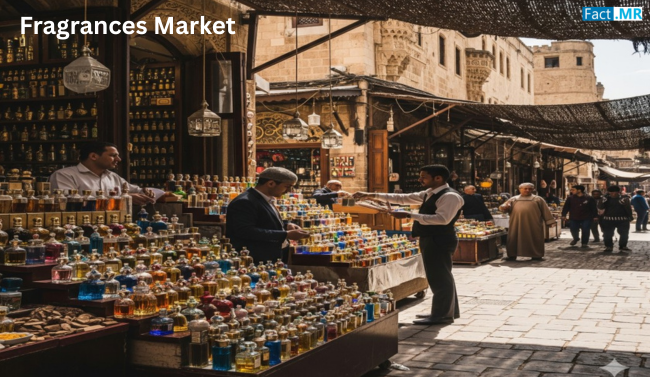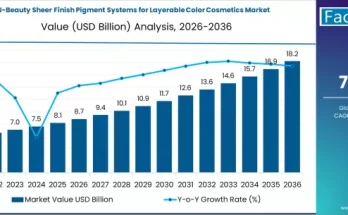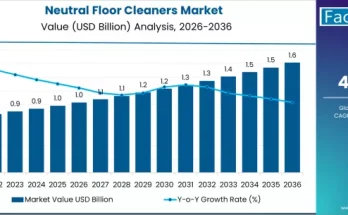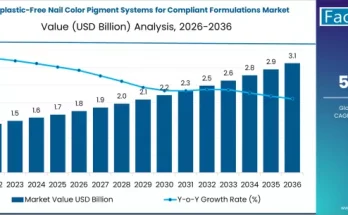Fragrances have transcended their role as luxury products to become everyday essentials across the globe. From perfumes and deodorants to household products and toiletries, the fragrance market reflects consumer aspirations, cultural identity, and lifestyle choices. As awareness of personal grooming grows and wellness trends expand, fragrances are becoming indispensable. The market’s outlook highlights strong potential for innovation, sustainability, and personalization.
Market Overview
The fragrance market encompasses a wide range of products, including fine fragrances, cosmetics, toiletries, soaps, detergents, and household goods. Fragrances today are not limited to premium perfumes but extend into functional categories, such as cleaning agents, body care, and aromatherapy. This evolution mirrors consumer demand for sensory experiences and the emotional value attached to scents.
The competitive nature of the industry pushes brands to innovate with natural ingredients, eco-friendly production, and unique scent combinations. Companies are increasingly focusing on marketing strategies, digital footprints, and celebrity endorsements to strengthen consumer loyalty.
Regional Insights
North America
North America has established itself as a hub of fragrance innovation, with consumers showing strong preferences for premium and multi-purpose products. Personalization and premium packaging are key differentiators, while younger demographics are driving the popularity of niche and luxury fragrances.
Europe
Europe has a longstanding tradition in perfumery, particularly in countries like France and Germany. The region’s emphasis on natural ingredients, essential oils, and organic products makes it a focal point for sustainable fragrance innovation. Imports of high-quality essential oils have grown, further supporting regional growth.
Asia-Pacific
The Asia-Pacific region is emerging as a significant market, supported by rising disposable incomes, cultural practices, and demand for both luxury and affordable fragrances. India’s deep cultural association with scents like sandalwood and jasmine makes it a key player, while China’s growing beauty and skincare industries create ample opportunities for fragrance suppliers.
Latin America and the Middle East
Both Latin America and the Middle East have unique consumption patterns shaped by cultural traditions. Premiumization, luxury purchases, and a strong affinity for bold, long-lasting scents characterize these regions. Manufacturers targeting these markets often adapt product offerings to reflect local preferences.
Key Trends & Forecast
- Shift Towards Natural Ingredients
Consumers are increasingly wary of synthetic chemicals and allergens, driving demand for natural and organic fragrances. Plant-based ingredients such as flowers, fruits, resins, and essential oils are gaining preference. - Sustainability and Eco-Friendly Practices
From phthalate-free formulations to recyclable packaging, sustainability has become a key focus. Ethical sourcing and cruelty-free products are now major purchase drivers. - Premiumization and Personalization
Customized scents, niche perfumes, and premium collections appeal to millennials and Gen Z consumers seeking exclusivity. Personalized fragrance kits and subscription models are also gaining traction. - Digital Engagement and E-Commerce
The growth of online retail has transformed distribution. Brands are investing in digital marketing campaigns, influencer collaborations, and virtual scent discovery experiences to capture consumer interest. - Aromatherapy and Wellness Trends
Beyond cosmetics, fragrances are being integrated into wellness routines. Essential oils and aromatherapy products are expanding into mainstream markets, aligning with holistic health and self-care.
Applications & End-Use Outlook
Cosmetics and Toiletries
Fragrances are a vital element in cosmetics and toiletries, ranging from lotions and creams to shampoos and shaving products. The integration of long-lasting and skin-friendly scents enhances product appeal and consumer loyalty.
Fine Fragrances
Luxury perfumes remain a symbol of status and identity. While mass-market fragrances are growing, the premium segment continues to capture attention through exclusivity, craftsmanship, and unique formulations.
Household Products
Detergents, cleaners, candles, and air fresheners increasingly rely on fragrances to provide added value. Fresh and natural scents elevate everyday household items into lifestyle products.
Soap and Detergents
Soaps and detergents are among the largest fragrance applications globally, driven by hygiene awareness and the desire for pleasant everyday experiences.
Strategies by Industry Leaders
Leading fragrance companies are investing heavily in:
- R&D: Developing new scent formulations that combine longevity, safety, and innovation.
- Advertising & Celebrity Endorsements: Influencing consumer buying behavior through aspirational marketing.
- Digital Transformation: Expanding e-commerce channels and building strong online communities.
- Product Diversification: Offering a variety of scents across multiple product categories to attract diverse consumer segments.
Smaller players, meanwhile, are finding success with niche offerings, natural products, and region-specific scents that resonate with local culture.
Conclusion
The fragrances market is more than a sector of luxury and personal care—it is a reflection of cultural expression, lifestyle transformation, and global consumer aspirations. With shifting preferences toward natural ingredients, sustainability, and personalization, the industry stands at the forefront of innovation.
As regional markets evolve and digital platforms continue to reshape consumer engagement, companies that embrace ethical practices, authenticity, and inclusivity will set the tone for the future. Fragrances, once a luxury, have become integral to daily life—blending art, science, and emotion into products that resonate across generations.



